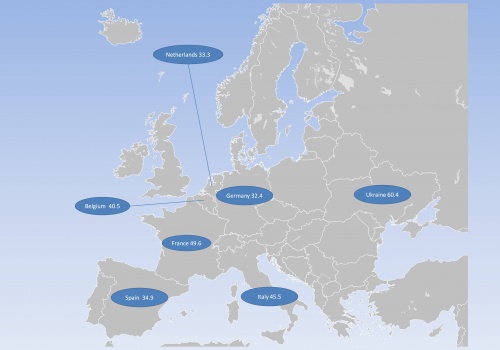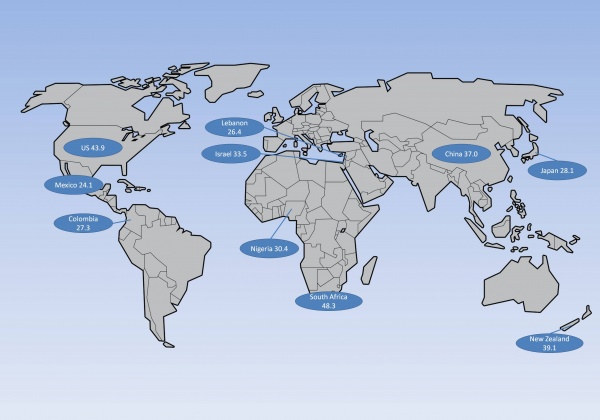Epidemiology of Pain
- Please do not edit unless you are involved in this project, but please come back in the near future to check out new information!!
- If you would like to get involved in this project and earn accreditation for your contributions, please get in touch!
Tips for writing this page:
- Describe current evidence for pain epidemiology, acute and chronic.
- Describe the public health implications of this epidemiological picture including refernce to social, ethical, and economic considerations
Original Editor - Alberto Bertaggia.
Top Contributors - Alberto Bertaggia, 127.0.0.1, Rachael Lowe, Jo Etherton, Kim Jackson, WikiSysop, Lauren Lopez, Jess Bell and Amanda Ager
Introduction[edit | edit source]
As of today, it is difficult to define the epidemiology of pain because of its subjective nature of the symptoms and the lack of consensus for specific diagnoses and conditions, therefore it is hard to talk about evidences for the true incidence of most pain conditions[1].
People can experience pain as an acute acute, chronic, or intermittent condition, or a combination of the three[2]. Specifically, chronic pain is a complex condition embracing physical, social and psychological factors, consequently leading to disability, loss of independence and poor quality of life (QoL)[3]. It seems clear there is the need for Public Health to address pain as a disease itself[4][5], rather than a simple symptom, in order to provide better interventions for the management and the prevention of pain[6].
Epidemiology[edit | edit source]
As stated above, there is a lack of evidences for the incidence of pain[7]. Despite this, a world-scale epidemiolgy report of 2008 produced by Tsang et al. shows an age-standardized prevalence of chronic pain conditions in the previous 12 months of 37.3% in developed countries and 41.1% in developing countries, with an overall prevalence of 38.4%[8]. The pictures belows shows the crude prevalence of any pain condition in previous 12 months (%) among various countries[8].
There is a study from 2006 attesting that approximately 20% of the adult European population were having chronic pain with fewer than 2% of sufferers ever attend a pain clinic and one-third of the chronic pain sufferers were currently not being treated[3].
Sub Heading 3
[edit | edit source]
Add text here...
References
[edit | edit source]
- ↑ Henschke N, Kamper SJ, Maher CG. The epidemiology and economic consequences of pain. Mayo Clin Proc. 2015 Jan;90(1):139–47.
- ↑ Goldberg DS, McGee SJ. Pain as a global public health priority. BMC Public Health. 2011;11:770.
- ↑ 3.0 3.1 Breivik H, Collett B, Ventafridda V, Cohen R, Gallacher D. Survey of chronic pain in Europe: prevalence, impact on daily life, and treatment. Eur J Pain. 2006 May;10(4):287–333.
- ↑ McGee SJ, Kaylor BD, Emmott H, Christopher MJ. Defining chronic pain ethics. Pain Med. 2011 Sep;12(9):1376–84.
- ↑ Tracey I, Bushnell MC. How Neuroimaging Studies Have Challenged Us to Rethink: Is Chronic Pain a Disease? The Journal of Pain. 2009 Nov;10(11):1113–20.
- ↑ Hecke O van, Torrance N, Smith BH. Chronic pain epidemiology and its clinical relevance. Br J Anaesth. 2013 Jan 7;111(1):13–8.
- ↑ Cite error: Invalid
<ref>tag; no text was provided for refs namedHenscke 2015 - ↑ 8.0 8.1 Tsang A, Von Korff M, Lee S, Alonso J, Karam E, Angermeyer MC, et al. Common chronic pain conditions in developed and developing countries: gender and age differences and comorbidity with depression-anxiety disorders. J Pain. 2008 Oct;9(10):883–91.








